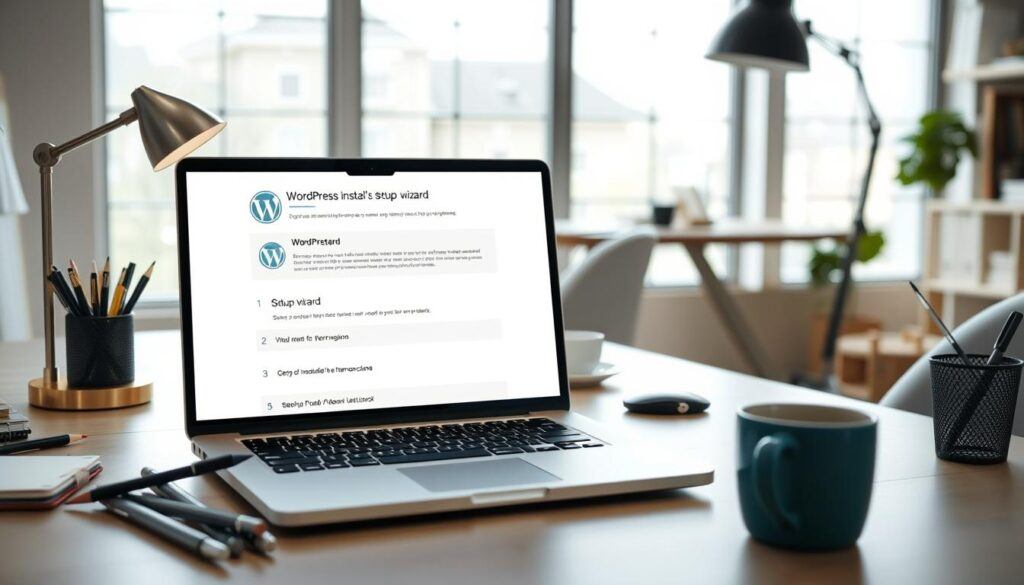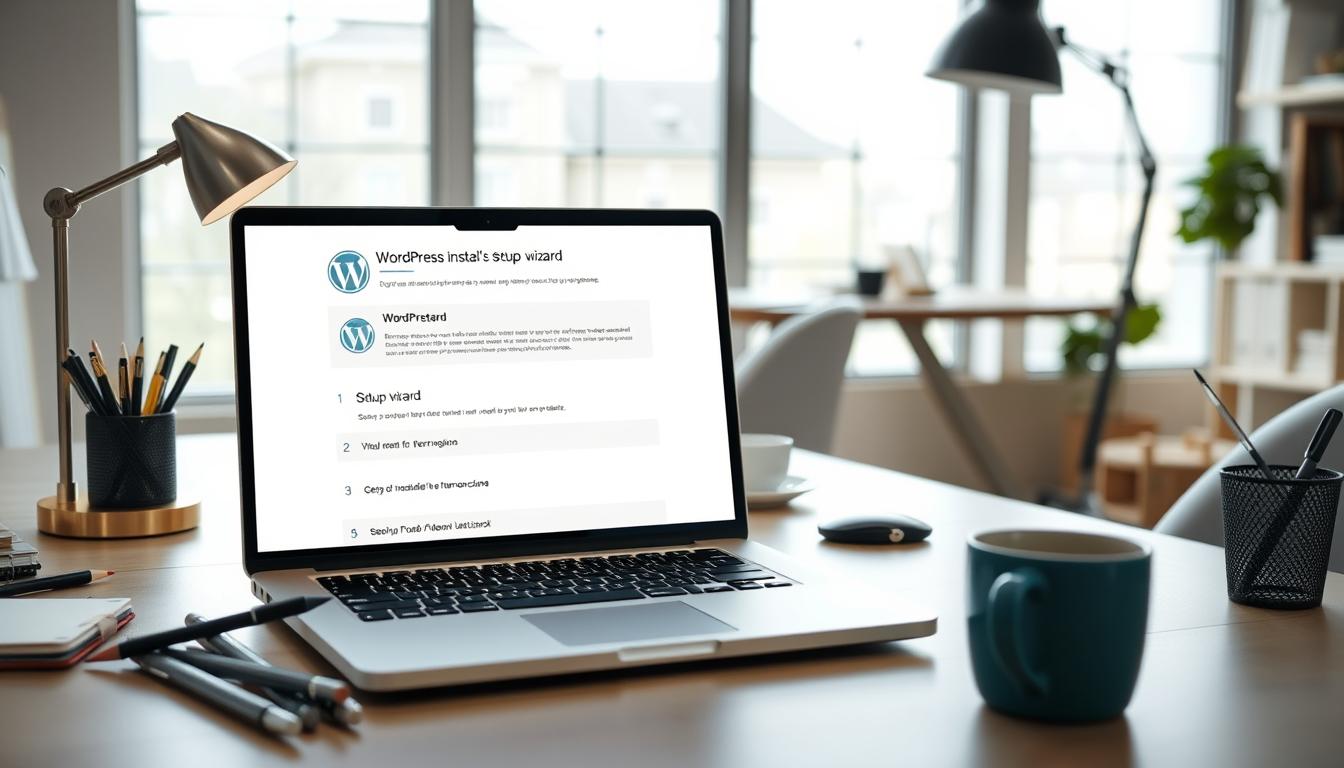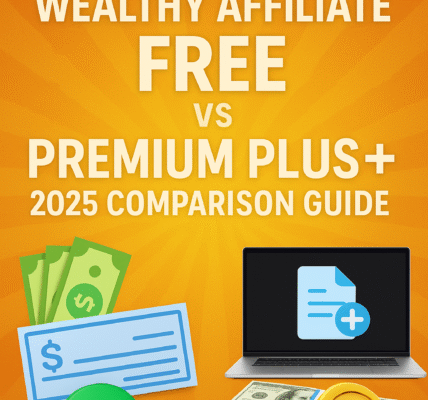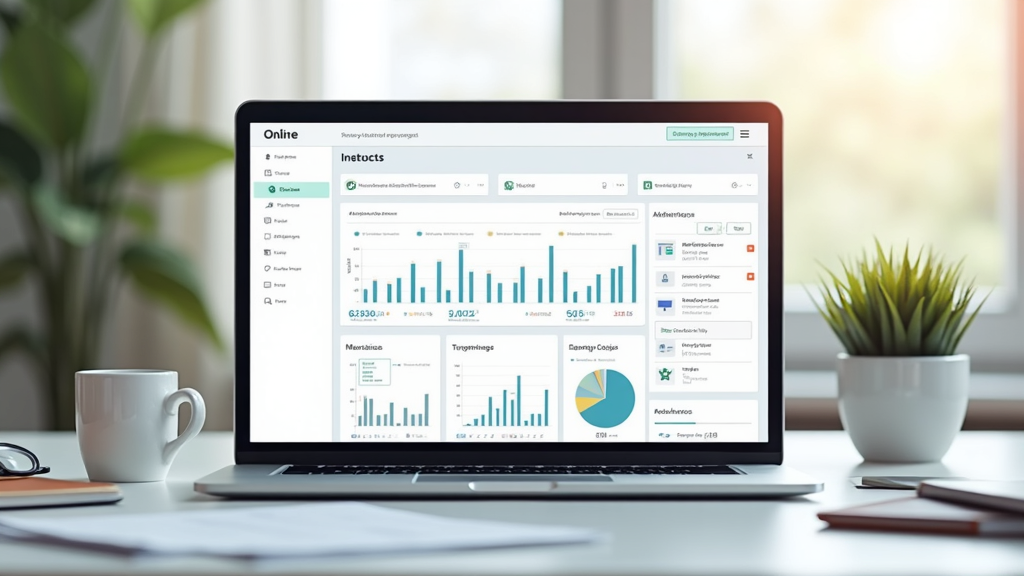A Beginner’s Guide to Setting Up Your First Website on WP Engine
Setting up your first website might seem hard, but with WP Engine, it’s simpler than you think. I’ve been in your spot before. I’m here to guide you through it, making it as easy as possible.
With WordPress hosting on WP Engine, you get many tools and features. These make creating and managing your site easy. My aim is to help you build a successful online business.
- What is WP Engine and Why Choose It
- Key Benefits for Website Beginners
- Planning Your Website Before Setup
- Selecting the Right WP Engine Plan
- The Complete WP Engine Beginner Guide to Account Setup
- Domain Name Setup and Configuration
- Installing WordPress on WP Engine
- Essential WordPress Settings for Beginners
- Choosing and Customizing Your Theme
- Must-Have Plugins for New Websites
- Creating Your First Content
- Launching Your Website and Post-Launch Tasks
- Conclusion
What is WP Engine and Why Choose It
WP Engine is a top choice for managed WordPress hosting. It offers many benefits for website owners. If you’re new to WordPress, you might be curious about what managed hosting means and why WP Engine is a great pick.
Managed WordPress Hosting Explained
Managed WordPress hosting means experts handle the technical side of hosting your site. This includes server management, security updates, and performance optimization. With WP Engine, you can focus on making great content and growing your online business.
Key Benefits for Website Beginners
WP Engine has several benefits for beginners. These include:
| Benefit | Description |
| Improved Performance | WP Engine’s optimized servers make your website load fast. |
| Enhanced Security | Automatic updates and malware scanning keep your site safe. |
| Expert Support | Get help from knowledgeable support staff for any problems. |
Choosing WP Engine means more than just a hosting service. It’s a partnership that helps you succeed online.
Planning Your Website Before Setup
Before you start setting up your website on WP Engine, it’s important to plan well. A good plan is key to a successful online business. It helps you reach your goals effectively.
Defining Your Website Purpose and Goals
First, figure out what your website is for and what you want to achieve. Think about what your website will do. Will it sell things, offer services, or share news?
Knowing your purpose helps you make better content and design choices. For example, an online store needs different features than a blog or a portfolio.
| Website Type | Purpose | Key Features |
| E-commerce | Sell products | Shopping cart, product catalog, payment gateway |
| Blog | Share information, stories | Blog posts, categories, comments section |
| Portfolio | Showcase work, services | Gallery, service descriptions, contact form |
Creating a Basic Content Strategy
Start by thinking about who your audience is and what they need. Then, create content that speaks to them. Brainstorm topics that fit your website’s purpose.
Plan how you’ll share this content, like through blog posts or videos. A good content strategy makes your website valuable to visitors. It improves their experience and keeps them coming back.
Selecting the Right WP Engine Plan
It’s important to know about WP Engine’s pricing plans for your website budget. WP Engine has various plans for different needs and budgets. This makes it easier to find the right plan for your online business.
Understanding Different Plan Features
WP Engine’s plans differ in features and support. Key features to look at include:
- Storage and Bandwidth: Make sure the plan has enough storage and bandwidth for your site.
- Number of Sites: Pick a plan that lets you host the number of sites you need.
- Support and Security: Look for plans with strong support and security, like automatic backups and malware scanning.
Budgeting for Your First Website
When planning your first website, think about more than just the WP Engine plan. Other costs to consider are:
- Domain Name: Domain registration can cost between $10 to $35 a year.
- Themes and Plugins: While some are free, premium ones can increase your expenses.
- Content Creation: High-quality content, whether made in-house or outsourced, is a big factor.
By understanding WP Engine plans and related costs, you can make a smart choice. This choice should fit your budget and business goals.
The Complete WP Engine Beginner Guide to Account Setup
Setting up your WP Engine account is the first step to launch your website. I’m here to guide you through it. WP Engine offers a strong WordPress hosting solution that’s reliable and scalable.
Creating Your Account Step-by-Step
To begin, go to the WP Engine website and click “Sign Up”. You’ll need to enter your name, email, and a strong password. A strong password is key to keep your account safe.
After filling in the details, choose a plan that fits your needs. WP Engine has various plans with different features. I’ll explain the differences in the next section.

Understanding the User Dashboard
After setting up, you’ll see the user dashboard. It’s your website’s control center. Here, you can manage settings, monitor performance, and use tools.
The dashboard is easy to use, with clear sections for tasks. You can install WordPress, manage your domain, and set up your site’s settings here.
| Feature | Description | Benefit |
| Site Management | Manage multiple sites from one dashboard | Ease of administration |
| Performance Monitoring | Monitor your site’s performance in real-time | Quick issue detection |
| Security Tools | Access to robust security features | Enhanced site security |
It’s important to understand the user dashboard for effective site management. Take time to explore and get familiar with the tools available.
Domain Name Setup and Configuration
A domain name is more than just a web address; it’s the first impression of your online business. Setting it up and configuring it correctly is key for a smooth online presence.
Choosing and Purchasing a Domain Name
Choosing a domain name that fits your brand and is easy to remember is crucial. When purchasing a domain name, pick a reputable registrar. Look for one with good prices and customer service. Also, see if they offer domain privacy protection.
Use online tools to check if your desired domain name is available. Think about the extension (.com, .net, .org) that fits your business best.
Connecting Your Domain to WP Engine
After buying your domain, connect it to your WP Engine hosting. Update your domain’s DNS settings to WP Engine’s servers. WP Engine has clear instructions to make this easy.
Once your domain is connected, your website will be live and accessible. Make sure your domain is set up right and your website loads well.
Installing WordPress on WP Engine
WP Engine makes installing WordPress easy. I’ll show you how to do it. With your WP Engine account ready, you’re close to having a WordPress site up and running.
Automatic Installation Process
The automatic installation process on WP Engine is fast and simple. First, log in to your WP Engine account and go to the “Sites” tab. Click “Add New” to create a new site. You’ll need to enter your site’s name, then choose how to install it.
Choose “WordPress” as your platform. WP Engine will then install WordPress for you. This includes setting up the core files and necessary settings.

Accessing Your WordPress Dashboard
After installation, you can log in to your WordPress dashboard. Click the “Login” link on WP Engine’s site overview page. Or, go to yourwebsite.com/wp-admin (use your actual domain name instead of “yourwebsite.com”).
Log in with your details to get to the WordPress dashboard. Here, you can customize your site, add themes and plugins, and start creating content.
Now that your WordPress site is installed and accessible, you’re ready to build your online presence. The WordPress dashboard is your main hub for managing your site.
Essential WordPress Settings for Beginners
Setting up your WordPress settings is crucial for a smooth user experience. After installing WordPress on WP Engine, you’ll need to adjust some key settings. This will help your site run efficiently.
General Settings Configuration
Begin by tweaking your general settings. Go to your WordPress dashboard and click on “Settings” > “General.” Here, you can set your site title, tagline, and timezone. Make sure your site title and tagline match your brand. Also, set your timezone to match your audience’s location.
User Profiles and Permissions
Managing user profiles and permissions is vital for a site with multiple users. Go to “Users” > “Your Profile” to edit your info. Set your role to “Administrator” for full access. You can also add new users and assign roles based on their duties. This ensures each user has the right level of access.
Reading and Discussion Settings
Configuring your reading and discussion settings is important. Under “Settings” > “Reading,” you can choose how your homepage looks and how many posts to show. In “Settings” > “Discussion,” you can manage comments and set up notifications.
By adjusting these essential WordPress settings, you’ll make your site more user-friendly and engaging for visitors.
Choosing and Customizing Your Theme
Choosing the right WordPress theme is key to a great website. It affects how your site looks and feels. A good theme makes your site more engaging and helps you reach your online goals.
Finding the Right Theme for Your Needs
With so many themes out there, finding the perfect one can be tough. Think about your website’s purpose and the message you want to share. Look for themes that work well on all devices. You can check the WordPress theme directory or third-party sites like ThemeForest for the right theme.
Installing and Activating Your Theme
After picking a theme, install and activate it. Go to your WordPress dashboard, then the “Themes” section. Click “Add New” to upload or search for your theme. After installing, click “Activate” to use your new theme.

Basic Theme Customization Options
After activating your theme, customize it to match your brand. Most themes let you change colors, fonts, and layouts. Use the WordPress Customizer, found under “Appearance,” to make changes and see them live.
By choosing and customizing your WordPress theme wisely, you can create a unique online presence. It will reflect your brand and support your business goals.
Must-Have Plugins for New Websites
When you start a new website on WP Engine, picking the right plugins is key. Plugins boost your site’s security, user experience, and performance. They make your website better in many ways.
Security and Backup Plugins
Security and backup plugins are essential for keeping your site safe and backed up. Wordfence is great for security, and UpdraftPlus is top for backups. They offer strong protection and give you peace of mind.
| Plugin | Purpose | Key Features |
| Wordfence | Security | Firewall, malware scanning, login security |
| UpdraftPlus | Backup | Automated backups, cloud storage integration |
SEO and Analytics Plugins
To get more visitors and know your audience, you need SEO and analytics plugins. Yoast SEO helps make your content better for search engines. Google Analytics by MonsterInsights tracks your site’s performance.
These plugins give you insights and tools to boost your site’s ranking and user interaction.
Contact Forms and Social Media Integration
To talk to your audience and grow your online presence, use contact form and social media plugins. WPForms is easy to use for contact forms. Social Warfare adds social media sharing buttons to your site.
Creating Your First Content
Creating high-quality content is key to your website’s success. I’m here to help you through this process. Your content is the heart of your online presence. It’s vital to start with the best.
Setting Up Essential Pages
Pages like ‘About,’ ‘Contact,’ and ‘Services’ give visitors the info they need. To create these, go to your WordPress dashboard. Click on ‘Pages’ and then ‘Add New.’ Make sure your info is clear and to the point.
Your ‘About’ page should share your brand’s story. The ‘Contact’ page should have a form and your address.
Writing and Formatting Blog Posts
Blog posts are a great way to connect with your audience and boost SEO. Start with a catchy title and intro. Use headings and subheadings to organize your content.
Emphasize important points with italic and bold text. For example, bold text is good for stats, and italic for quotes.
Adding Images and Media Files
Images and media files make your content more engaging and visually appealing. To add an image, click ‘Add Media’ while editing. Then, upload your file. You can also use images from other sources, but make sure you have permission.
Here’s a table to help you understand different media types and their uses:
| Media Type | Description | Best Use |
| Images | Visual elements like photos, graphics | Blog posts, product showcases |
| Videos | Motion graphics, tutorials, vlogs | Tutorials, product demos, vlogs |
| Audio Files | Podcasts, music, voiceovers | Podcasts, music players, voiceovers |
Launching Your Website and Post-Launch Tasks
Before you hit the launch button, make sure you’ve completed all the necessary steps. Launching a website requires careful planning and execution.
Pre-Launch Checklist
A pre-launch checklist is crucial to ensure your website is ready for the public. Key tasks include:
- Testing for compatibility across different browsers and devices
- Reviewing content for spelling and grammar errors
- Ensuring all links and forms are working correctly
- Configuring analytics tools
Monitoring Your Site After Launch
After launching, it’s essential to monitor your site’s performance. This includes:
- Tracking website traffic and user behavior
- Monitoring for security breaches or malware
- Regularly updating software and plugins
- Optimizing performance for better user experience
By following these steps, you can ensure a successful website launch. This will help maintain a strong online presence.
Conclusion
Setting up your first website on WP Engine is easy once you plan and act. This beginner guide has given you the tools to start your online business.
WP Engine’s WordPress hosting lets you focus on making great content and growing your audience. You learned how to plan your site, pick the right WP Engine plan, and set up WordPress.
Remember, WP Engine is here to help your online business grow. Use their managed WordPress hosting and expert help to build a strong online presence.
It’s time to make your website dream a reality. Start with WP Engine today and see how a well-built online business can change your life.




